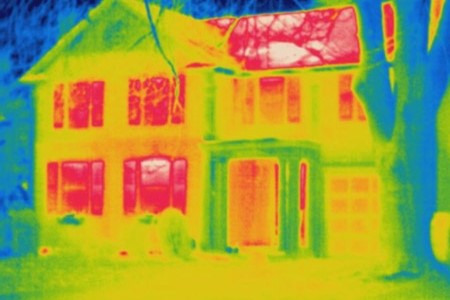Getting to Grips with U values
U-values indicate the amount of heat loss through a given thickness of a particular material. Basically, the higher the U-value, the less insulation you have and therefore, the greater the heat loss.
U-values are important to get to grips with, because knowing how much heat is being lost – and doing something about it – will not only make a buildingmore eco-friendly, it will inevitably reduce the costs of running a property. Also, nearly every external building element has to comply with thermal standards that are expressed as a maximum U-value, which we will explain further below.
The Breakdown
The best insulating materials will have a U-value of close to zero – the closer the better. Building Regulations currently insist that for a new building, the elements must have maximum U-values as follows:
- Wall – 0.2 W/m2k (watts per metres squared kelvin)
- Roof – 0.15 W/m2k
- Windows – 1.6 W/m2k
Basically, insulation is key, so here’s a rundown of your options:
Walls
Properties built with solid walls – particularly those built before the 1930s – will have high U-values since prior to this era, energy efficient buildings weren’t really considered a priority.
Solid walls have no gap (unlike cavity walls), so they let more heat through. But don’t worry, you can still insulate a solid wall, either internally or externally.
Alternatively, if your home was built between 1932 and 1982, then you’re likely to have cavity walls. And those built after January 1st1983 should already have cavity wall insulation installed to abide by the latest UK Building Regulations. Cavity wall insulation keeps your home warmer in winter and cooler in summer, so should help produce much lower U-values. For example, a filled cavity wall that was built in 2010 or later will have a U-value of 0.2 W/m2k.
To improve a cavity wall’s u-rating, you can install 150mm of wool. Although this is considered the cheapest option available to builders, it means you’ll have extremely thick walls. An alternative (but more expensive) solution is cover the cavities with Celotex – an insulation board made of cane fibre.
Roofs
An estimated 25 per cent of heat is lost through the roof. The best way to combat this is to insulate the loft. Many favour this option because it’s cheap and can be a relatively easy job. You can use a variety of materials to do this such as Celotex, Sheepwool, Fibreglass and Knauf Space blankets (fibreglass in a metallic space blanket).
An uninsulated roof space has a U-value of approximately 2.5 W/m2k, so it really is beneficial to insulate, not only to be more energy efficient, but to comply with Building Regulations too.
Windows
No matter how good the U-values are for the windows, they will never match up to that of walls. The bottom line is that you can’t simply add insulation to them.
Poorly-selected windows are a major source of heat loss in the winter. To get around this issue, you can reduce the size of your windows, however, this is isn’t a poplar option as it not only does decreases the amount of light, it can affect the whole design and feel of a property.
A more traditional approach to improve the energy efficiency of windows is to increase the number of layers of glass and air. Double/triple-glazed windows have insulating air – or gas-filled spaces between each pane. These air spaces, between each layer of glass, resist heat flow. However, it’s important to know that the wider the air space, the higher the U-values are because they allow too much heat transfer.
Highly energy-efficient windows are manufactured with inert gases (such as argon or krypton) in the spaces between the panes, because these gases transfer less heat than air. When correctly selected and installed, these windows will help minimise the heating and lighting costs.
Another way to reduce heat loss from windows is glazing. Advances in glazing technology mean that special glass (low-e) is now available to control heat loss through the window and should currently be standard under the Building Regulations for most homes in the UK.
To measure the efficiency of your windows you can use the BRFC’s (The British Fenestration Rating Council Limited) ‘Window Energy Rating’. This rates both the U-value and solar gain benefits on a scale between A-G – with A being the best.
Different combinations of frame style, frame material and glazing can all factor in the U-value rating of a window, so these can produce very different results when trying to compare energy efficiency and cost.
Anything else?
Do you have any questions about U-values or want to know more about insulation? If so, feel free to fire us a tweet or get in touch with International Timber today.


